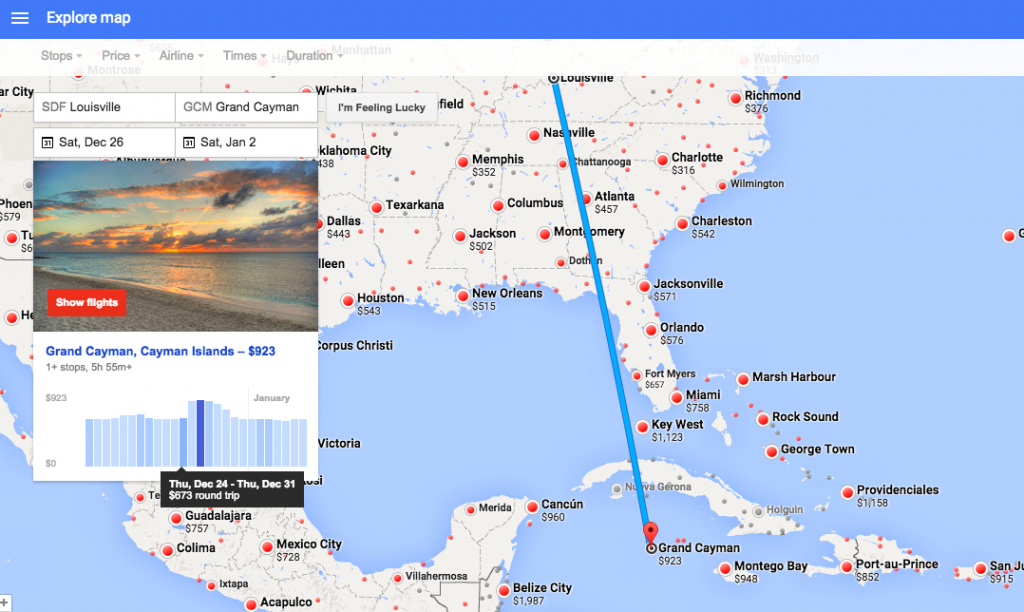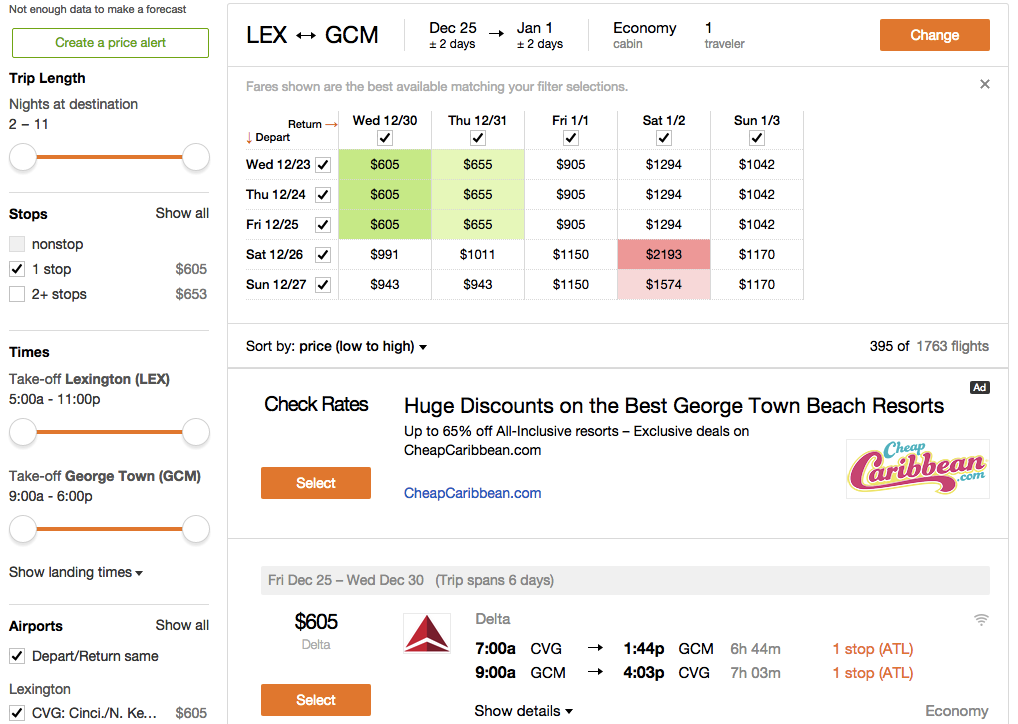Part of the fun of going on vacation is deciding where to go, figuring out where to stay, and planning what to do. This weekend in the Weekend Series, you are going to plan your next international vacation.
Content:
Flights
Before you begin planning your next vacation, decide on your limitations. Are you limited by cost? Travel dates? Length of travel time? There are tools that can help you make decisions based on your limitations. We do recommend that you start your planning based on flights. Flight dates and prices are the most variable, especially if your destination is undecided.
Exploring Flights
If your travel dates are limited because of work or school dates, but your destination can be flexible, I recommend using the Google Flights Explore Map.
For example, if you are planning to travel during Christmas break, then you can view locations around the world on a Google map with the price of the flight. You can click and check prices for flights to different locations:

You can also see a graph of the price of the flight for the location that you select based on time. This means that if your dates are SLIGHTLY flexible, you can change your dates a little to save some money.
In the example search above, you can see that the price of flights drops dramatically if you can travel two days earlier.
Searching Flights
If your dates are limited AND you know where you want to go, you can do a very flexible search using KAYAK. You can search for airports nearby your departure and destination locations. You can search for a slightly flexible schedule.
You should review and use a lot of the filters in the left column. For example, you can really narrow the search and get rid of inconvenient flights by using the following settings:
- Stops – Unless you are going to a small regional airport, you will likely want to choose a nonstop or 1 stop filter.
- Airports – Deselect any of the listed nearby airports that you are unwilling to fly in and out of. Unless you have friends or family that will take you an airport in one city and pick you up in another city, you will need to select Depart/Return same.
- Flight Quality – Unless you want very long overnight layover times, you should deselect Show red-eyes.
- Layover Airports – If you are traveling during winter months, you might want to avoid norther airports such as Detroit and Chicago that typically have missed connections and cancelled flights. If you’re traveling during hurricane season, you might want to avoid coastal layovers in cities such as Miami and Houston.
- Durations – You can control the layover times for flights that are shown. For international flights, you want to have at least 1.5 hours on the layover coming back into the U.S. so that you can clear customs without rushing. As a general rule, never fly domestically (or outbound on international flights) with less than a 1 hour layover. If you’re traveling during holidays, particularly at Christmas, you should make sure that you have at least a 2 hour layover for all of your stops.
Using Frequent Flyer Miles
If you travel regularly, you should ABSOLUTELY join the frequent flyer program for every airline that you travel with. Additionally, you can sign up for the credit card for the airline and get a big pile of free miles. When you use one of the methods above to narrow your flight choices, make sure you check the airline site for the price using miles. Sometimes you can really get a good deal.
Destinations
Although you can limit your list of travel destination based on the prices and availability of flights, your trip is really about WHERE you are going, and not how you get there. (Unless you’re hiking or taking a road trip.)
Using a Bucket List
While it can be fun to travel to any new place, if you don’t have a plan, you might never get to the places you REALLY want to see. Put together a bucket list. There are travel articles on the Travel Channel, the UK Telegraph, or check out this Huffington Post article on the 17 Places You Have to See Before You Die. If you’re a scuba diver, make a dive bucket list from Sport Diver’s 50 Best Dive Sites in the World.
It’s a big world out there with endless amazing things to see. Make a bucket list to narrow your search.
Choosing a Destination Based on Activities
Often, you can shorten your list of possible destinations immediately based on what you want to do while on vacation. Do you want to scuba dive? Relax on the beach? Go fishing in the mountains? Hit the slopes to ski or snowboard?
After you have shortened your list, you can narrow your final decision by looking more closely at each of your destinations. You can use one or more of the following resources to find things to do at a specific location:
- Local Tourist Information – You can locate the website for the city or area that you are visiting, that will often include information about activities in the area, and often include coupons or discounts.
- Lonely Planet – If you really prefer a paper guide, check out Lonely Planet.
- Travel Agent – If you have access to a travel agent with a club membership, take advantage of the service. Travel agents can save you lots of research time and check availability and prices for you. Additionally, they often have inside information based on previous clients’ visits to the area and to specific resorts.
- Trip Advisor – The Trip Advisor website has great information about activities, tours, landmarks, parks, and museums in a specific destination. You can also look at travel guides for the destination to get ideas for day trips or shopping excursions. The site also has restaurant and hotel reviews.
Resorts
Whether you have decided on a single destination or narrowed your choice to only a few, the resort that you choose can make or break your vacation.
Choosing a Resort Based on Amenities
Do you want a low-maintenance vacation where you never have to leave the all-inclusive resort? Do you want to stay in a hotel in town so that you can walk to shopping and dining? Do you want to be right on the beach or ski slope, or can you walk or take a shuttle to save money? Do you want a pool or hot tub? Do you need a refrigerator in the room? Check out some of the following sites that have great searching and filtering capabilities and large hotel databases:
- Expedia – Expedia is a great go-to site for hotel searching.
- Trivago – The Trivago site is advertising heavily and has a lot of filtering options. It also provides a list of prices from across hundreds of websites, making it easy to find the best price for your hotel.
- Trip Advisor – The Trip Advisor hotel searching capabilities are pretty good, but most importantly, you can read great details in the resort reviews by travelers.







